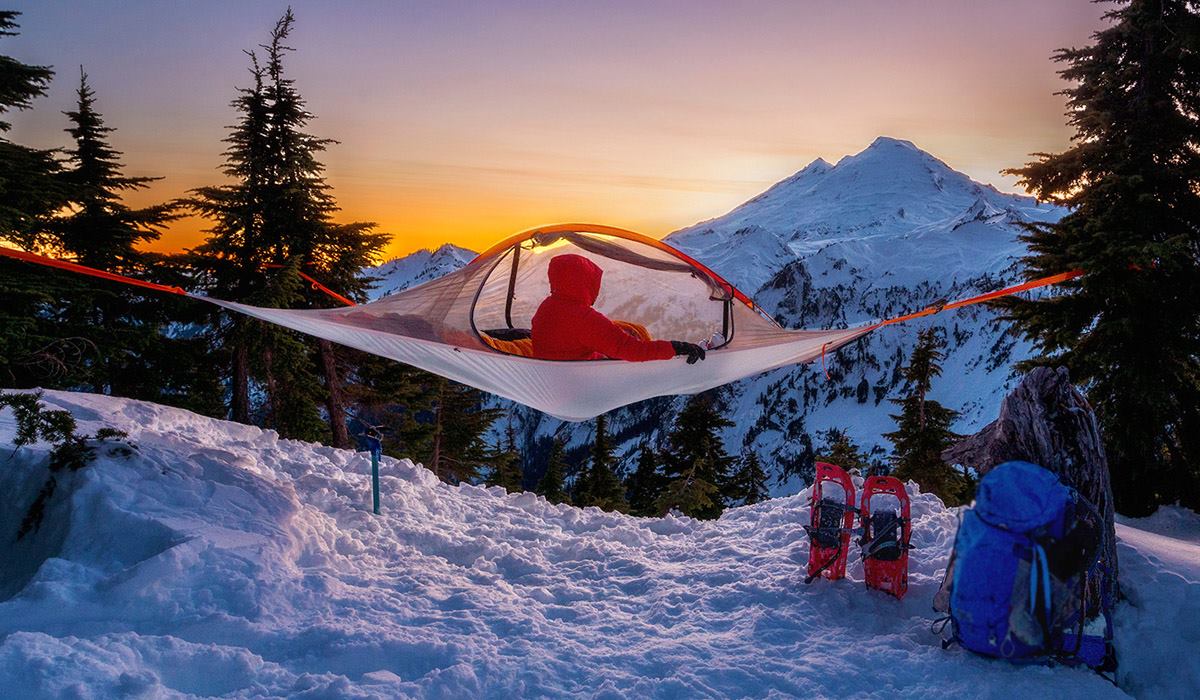If you’ve ever taken a nap or snoozed in a hammock you’ve felt the breeze, usually underneath you. You may have also experienced the sag, difficulty getting your blanket wrapped around you and—of course—awkwardly getting in or out of your sleeping bag and the hammock (especially in pitch black).
Of course, most of these problems aren’t unique to hammocks—they also happen with many tents! But the problem of cold is something that can defeat even the mightiest of hammock campers.
Many campers try a hammock once and then never go back. Even when the weather is perfect during the daytime, the temperature is likely to drop at night and so begins the number one problem with hammock camping: dealing with cold air and wind.

Cold Weather Hammock Camping
The problem with cold weather camping and hammocks isn’t a mystery: hammocks were created in the jungles. Jungles have plenty of trees and far too many bugs, so jungle-dwellers figured out a brilliant solution: sleep above ground and stay cool and unbitten.
If you are thinking of camping in Michigan this Fall (for example), it might seem like a hammock is a poor choice. But think again.
It turns out there are new, improved and frankly incredible hammock systems that make using cold weather accessories a billion times easier. Three-point hammock systems create a firm, almost rigid bed—perfect for an inflatable pad and far less hassle when it comes to getting into and out of your sleeping bag. No sagging means happier bagging.
But if you want to stick with a traditional 2-point hammock you can warm it up by inserting a decent, inflatable air mattress.
When combined with a hat, an insulating pillow, and/or a mummy bag, the 3-point system (see Tentsile products) means you no longer need to bring or set up a tent. You can dream sweetly as you hang in the air, above the cold ground or snow. And these systems offer the bonus of adding the accessories below without doing gymnastics.

6 Tips For Staying Warm in a Hammock or Tree Tent
If you don’t choose Tentsile or another rigid 3-point set up, you can still use these tips with any normal (old-school) hammock:
- Always sleep on a slender foam (or better yet) inflatable pad—our Sky-Pads are the bomb!
- Always use a pillow, preferably one that inflates for that extra air padding and warmth.
- Choose a mummy-style sleeping bag that helps trap body heat.
- Wear a hat (wool is awesome but synthetic fabrics work well, too).
- Instead of a sleeping bag liner, use a top quilt—basically an extra blanket that makes it a lot easier to get in and out of your hanging bed.
- Use a tarp or rain-fly to trap heat.
Hammocks are especially vulnerable to even slight breezes, which is why #6 matters. Most campers will bring a tarp or other wind resistant fabric to camp with anyway, and wrapping it around your body when hammock sleeping is a good plan. One last tip: don’t camp in a hammock in extreme cold. The earth is insulating and when it gets super chilly, you need Mother Earth to wrap you in her warm arms.



